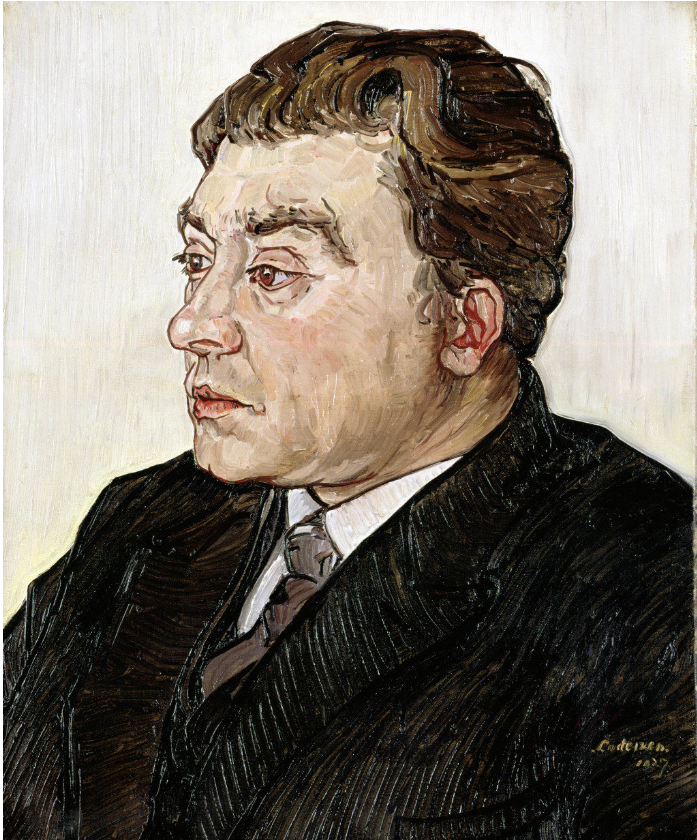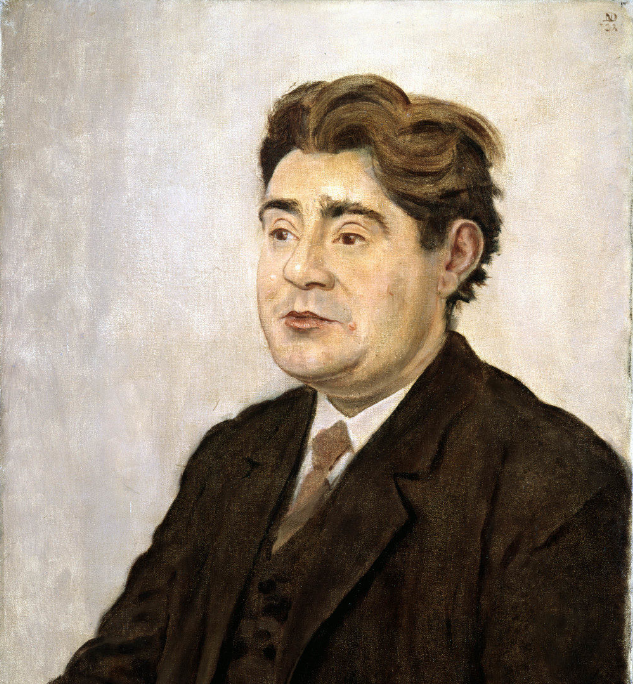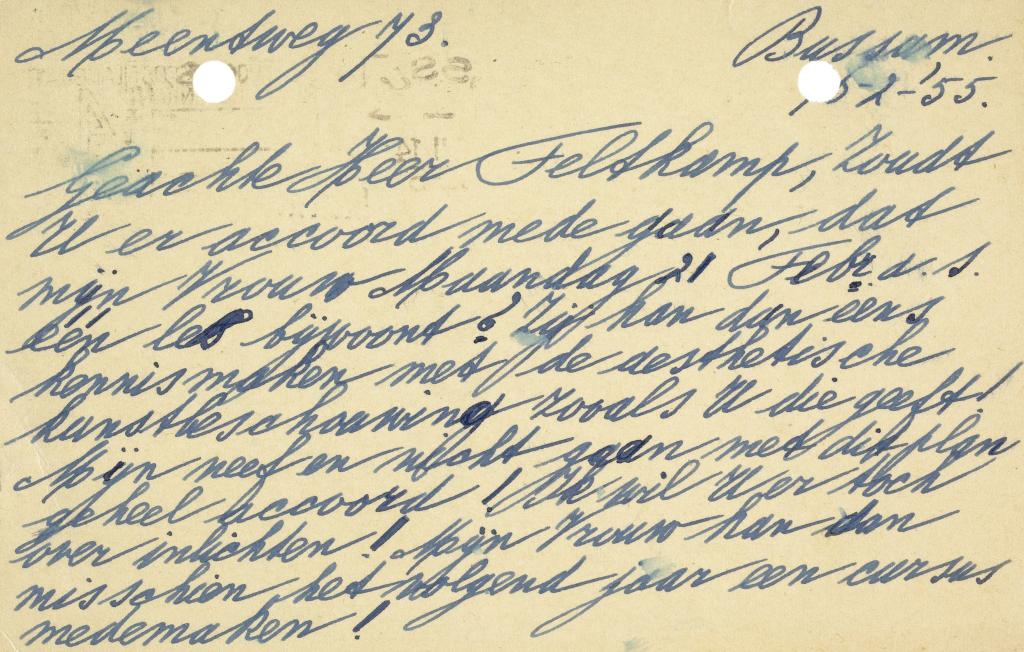Wim Feltkamp, in the footsteps of H.P. Bremmer

The RKD holds the archive of Willem Cornelis ('Wim') Feltkamp (1898-1974). Feltkamp was a cousin of Hendricus Petrus ('Henk') Bremmer (1871-1956), the renowned Dutch art pedagogue known as an 'art pope' in the period before World War II. When Bremmer was looking for a successor for his mission work to foster greater understanding of modern art among interested audiences, Feltkamp seemed a logical choice.
Bremmer's legacy
After studying law, Wim Feltkamp was trained by Bremmer in the mid-1920s to continue his method of art education. Entirely in Bremmer's spirit, Feltkamp brought together groups of interested attendees in various cities. In 1928, his name surfaced in De Telegraaf, which reported on his lecture 'Evolution of aesthetic insight' for the Leidsche Kunstvereeniging (Leiden Art Society). The reporter described the essence of the lecture as follows: 'The privilege of true seeing, which is peculiar to the artist, is that one very strongly experiences the effect of works of art, while knowing nothing at all about them, because the enjoyment of them rests solely on sensing the living emotion of their creator'. This statement perfectly captures the Bremmerian view of art. Aesthetic understanding requires unbiased viewing, without including the incriminating 'context'. The work of art speaks directly to the viewer through the artist's mind. This view was at odds with traditional art history, which places great value on historical perspective. Until the 1970s, Bremmer's ideas thus found continuation in this way through his nephew Feltkamp.

Collecting, advising, mediating
Feltkamp combined lecturing and giving courses with actively collecting art, mediating in art purchases and advising collectors. He promoted the same artists his uncle had chosen as favourites, such as Floris Verster, Jan Toorop, Dirk Hidde Nijland, Henri van Daalhoff and Johan Coenraad Altorf, with a preference for hushed, realistic representations. He also gave attention to cultural expressions from past periods or other cultures, such as Chinese ceramics or the Italian Renaissance. He did not hesitate to include poetry or music in his lectures; in his view, art was a universal phenomenon. From 1933, he lived and worked at the Groenoord country estate in Leiden, in the former residence of Verster. His portrait was painted in 1927 by Jan Lodeizen and five years later by Dirk Hidde Nijland, both artists who belonged to Bremmer’s and Feltkamp's circle.

Feltkamp as publicist
Following the example of his uncle Bremmer, Feltkamp published on aesthetics and chosen artists in magazines and books. He was on the editorial board of Weekrevue De Prins and wrote about the architect Kropholler, and befriended artists such as Dirk Hidde Nijland and Rudolf Bremmer, among others, in Elsevier's Geïllustreerd Maandschrift. The most important and complete edition concerned the 1946 book Zien en verstaan (See and Understand) which, as the title indicates, is an explication of Feltkamp's erudite aesthetic outlook. Art, he is convinced, is a form of beauty that one must undergo through experience, not through predetermined theory or principles. The key to truly understanding the essence of art lies in unbiased contemplation. He therefore valued art appreciation higher than art history, a method that involves too much context and meaning in 'understanding' art.

A postcard from Tutein Nolthenius
In Wim Feltkamp's archive, there is correspondence from family, artist friends and students. These writings (handwritten, typed, cards, cat calls) give a wonderful insight into the comings and goings of Feltkamp and his network. They also contain interesting historical information, for instance on the war years or on the practical implementation of the courses. Via a handwritten postcard in 1955, for instance, W.R. Tutein Nolthenius inquired with Feltkamp about the possibility for his wife to attend an evening course on 'aesthetic art appreciation'. This would give her an impression of the method, so that she could join the course the next year. The director of the oil mills in Delft Hugo Tutein Nolthenius, as an art collector, had previously been advised by H.P. Bremmer, so the lines of communication were short. Feltkamp died of a stroke in Arnasco in 1974 after a rich life in which the art of looking played a leading role.